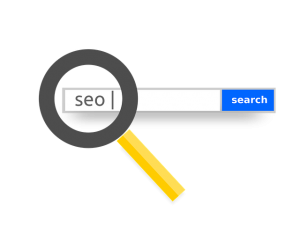Using an Email Marketing System for Small Business
What We’ve Discovered to Boost Profits After 3 Years
This marks the beginning of WELD2’s 4th year helping small technology contractors build their customer relationships and grow profitability. We’ve used an email marketing system, targeted at their existing customers as our primary tool. This journey has taught us plenty about what works, what doesn’t, and how to be more effective email marketers for our clients. Here’s what we’ve discovered about how to make email marketing more effective for small businesses like yours.
Our clients are small technology contractors, primarily focused on the high-end residential market. Some also count commercial projects as a significant part of their business. about 25% have multiple locations, but most are single location enterprises. If you’re responsible for marketing a similar business, our discoveries may be right up your alley. Even if your business is different in many ways, say you own 12 fried chicken franchises, or an aircraft interior panel manufacturer, many of the lessons still apply to your email marketing system.
Marketing Challenges the Right Email Marketing System Solves for Small Business Owners
Challenge 1: High intention, no time.
This is a biggie. Most of our customers are small businesses, typically with 15 or fewer employees and $ 2 million or less in annual revenue, although some are larger. As such, there are plenty of multiple hat-wearers involved. The marketing director is usually the owner, or someone else who counts about 12 other things as their primary responsibilities.
They have every intention of staying closely connected with their existing customers as part of their marketing function. Other day-to-day business operations intervene and keep them from any consistency, if they ever send anything at all. Maybe they’ve sent an odd holiday mailer in some years. To most small business execs, it’s an old story; 70 emails, 23 customer phone calls, 3 meetings, a site visit, and 107 text messages later, the day’s end is long gone, and they still haven’t gotten to half the stuff on their day’s “To Do” list.
One of the first things to go by the wayside is any kind of regular communication to their past customers. Yes, they know it should be done, but so should addressing all those other issues that can have a much more immediate impact on their business. If it’s in your face, it gets your attention, and rightly so. An email marketing system can be a significant marketing time saver if you elect to do it yourself. If you outsource it, you’ll spend only as much time as you need to check your analytics. (More on that later)
Challenge 2: Unsure what works best or how to go about it.
The other big challenge we’ve found is many small business owners have no business, or more specifically, marketing background. They started their firm after working at a similar one. One day they decided to strike out on their own. Most were sales reps, technicians, programmers, designers or project managers. Some had a combination of those roles while with electrical, security, AV, or IT contractors.
While some have prior sales experience, that’s not really the same as marketing. Most don’t know exactly what works best to bring business through the door with the highest return on their investment in time and financial resources. Activities that deliver consistently positive results and require minimal time and financial input are obviously preferred.
Challenge 3: They’re not copywriters
Most of our customers are not copywriters. They’re not versed in the subtleties of crafting content that keeps their customers engaged long term, and taking action when called upon. That’s vital in our case, because the main goal is for our clients to score new contacts from their old customers. The ultimate goal is to convert those contacts into meetings, and ultimately into sales. For those owners who can write compelling copy, see challenge #1. They simply don’t have the time.
What Doesn’t Work in Email Marketing
If they had dabbled in email marketing before, we’ve found 2 big mistakes mistakes our customers typically made that kept them from seeing the kind of success they were hoping for.
Mistake 1 – Sending emails that were primarily product, service, or company focused.
This is what email marketing means to many, especially to those used to doing retail marketing. It’s been the norm for custom installation firms as well. Their emails were all about the new products from XYZ Company, all the arcane features, and why those products are so special. Images, yes, but just big product pictures, straight from the manufacturers’ stock, and product description (ditto). Some call this strategy “brochure marketing”.
The problem with that? Others can sell those products. Even if they can’t, it’s not about the product, it’s about the problem and the solution. Talking about a specific product and why it’s cool doesn’t deliver the small contractor’s audience any value. It serves only the custom installation firm, except that it doesn’t, really. It’s a key reason behind email marketing failures. See closely related Mistake 2, below….
Mistake 2 – Pounding their customers over the head with endless “Buy! Buy! Buy!” emails.
It’s all too common practice among email marketers. You’ve seen them too; probably the last time you checked your email. Your audience has also. They get that all day, every day from everybody else. Don’t fall prey to the temptation; your audience will just tune you out. Worse, that email style significantly increases unsubscribe rates, and reduces open rates. At best, customers ignore those emails.It highlights the need to target email marketing campaigns for specific audiences and markets. The promo style emails work well in the hospitality industry, where subscribers subscribed specifically to get timely specials and promotions. Having 2 for 1 chicken nachos this Friday during happy hour?
It highlights the need to target email marketing campaigns for specific audiences and markets. The promo style emails work well in the hospitality industry, where subscribers subscribed specifically to get timely specials and promotions. Having 2 for 1 chicken nachos this Friday during happy hour? Yum, I’m on the way!
That style doesn’t translate as well to the technology contracting space, where the goal is long term engagement, an eventual customer email or phone contact, and a consultative sales appointment. When it comes to email marketing messages for custom AV contractors, very few clients are going to buy a $ 60,000 home theater system tomorrow because you just sent them an email today.
Think about it this way: Email marketing is just that; marketing. It isn’t email sales. While selling directly from email messages can be highly effective in some spaces, we’ve found that it does not work well for technology contractors. In fact, it can be a real killer.
Another reason blasting out specials doesn’t really work in the tech contractor market is simple. Customers aren’t buying components. Our customers are contractors. They provide a solid value add, and sell complete, installed systems. In most cases their audience doesn’t know enough about exactly which components work with their system to know if that new A/V receiver special they just blasted out is even a good fit for their system.
For example, think about it this way. How well would it work for a general contractor to offer a special on Glu-Lam beams? Not very well, probably. Who, but possibly other general contractors or framing contractors, would know if those specific beams would work for their project or what a good price would be? It’s all about knowing your target audience and ideal customer.
What Email Marketing Strategies Do Work to Generate Long Term Business
After 3+ years we’ve made some discoveries as to what kind of email gets our customers more business, long term. We’re discussing this through the prism of what works for small contracting business. They are built on high transaction value, long term, repeat business that requires technical skills their customers either don’t have or would rather not use. It’s likely somewhat different in other spaces. For example, pure e-commerce companies or hospitality business may fly directly in the face of these, and actually strive to achieve the mistakes noted above. For them, they aren’t mistakes.
What Works: Delivering long-term value
As with any other customer transaction, with email marketing, delivering consistent value is vital. That’s true in all spaces, across all industries. Every email sent must deliver value to your target audience. It’s why the better you know your audience, the more successful you’ll be. You’ll know better what they find value in and how to give it to them.
A key question for delivering long-term value: Do you know who your target audience is and why they’re your target audience? Think about it from their perspective. Does your latest message deliver value to them? Did the previous one? Together this creates what we call Value History.
Value History and How it Helps Your Email Marketing: Compelling subject lines are vital for short term open rates, but if the value history is not there, open rates decline precipitously over time, and eventually, many will unsubscribe. If you have created solid value history, that precedent makes your audience open and read your email messages.
The audience for our customers is primarily affluent home owners and contractors serving them, such as custom home builders and architects. Sending out emails that have value to them and developing a value history keeps long term open rates high. It’s worked very well.
What Works: Concept driven content, rather than product or service driven content.
Our customers strive to enhance their customers’ lifestyles.
- What are the most popular concepts they use to do that?
- What are the latest lifestyle enhancement trends?
- What are some new and innovative ways their customers could use these concepts?
Communicating those in an entertaining fashion keeps readers coming back for more. It sparks ideas in their minds and puts your brand in front of them on a long term basis. You’re in their consciousness day in and day out, whenever something technology related comes up. That’s the goal.
What Works: Focus on building your own brand, not your vendors.
We ask our customers what the most important brand they sell is. The point’s flat lost on many. They answer with names of their leading vendors, like “Sony,” “Crestron,” “Control4,” or “Sonance.” They’ve missed the point completely. The most important brand they sell is THEIRS!
Most end users couldn’t tell a Crestron from a Sonance if it flew over and shat on their heads.
The mistake here is trying to leverage a manufacturer’s brand recognition. The problem is that, for the general consumer, custom AV manufacturers have virtually zero brand recognition. If they’re not named Sony, Pioneer, or Bose, most consumers haven’t heard of them. Quick, ask your mom, what’s RTI and what do they do? How about Atlona, Martin Logan, or Krell? Precisely. If you’re in a space where brand equity is high among your audience, leveraging your vendor’s may work, but not so much here.
YOU are the most important brand you sell. Consistently putting your brand in front of customers and associating it with long term value is job one from a relationship marketing standpoint. Email marketing is tailor made for doing just that.
Rarely or never mention other brands in your email messages. Images portraying branded products as part of an AV application are fine. There’s a Samsung, LG, or Sony TV in that media room pic? Well, it had to be made by someone.
What Works: Using plain language your customers understand.
Excessive industry buzzwords are a common email marketing problem. Spoken to your attorney or accountant lately? Yeah….well, it’s the same in the A/V world. The problem for custom A/V contractors is that their customers aren’t in their industry. Some may have a basic understanding, but many folks just want to know where the bleeping channel up button is on their remote. They don’t really give a flying Wallenda about HDCP 2.2, 12-bit Deep Color, or Dynamic Tessellation. Class D amplification? They just want to know what cool ways their lifestyles can be enhanced, and if you can help them do it.
This is a concern in any industry. Remember the target audience. If it’s accountants, hard hitting info full of terms such as difference on consolidation, return on capital employed, and working capital cycle, would be on the right track. Those may be too over the top for Joe/sephene average who just want a better handle on where their money goes each month.
If your audience is dermatologists, dropping an Exocytosis, Lichenification , or Onychocryptosis is to be expected. If your email newsletter is aimed at people with acne, those terms might be a bridge too far.
We’ve scrubbed our customers’ messages clean of such complicated talk unless there is absolutely no other way to convey the information. If there isn’t, that begs the question; should we even be discussing it in the the first place? It’s worked, and helped keep our customers’ long-term unsubscribe rates low and open rates high.
What Works: Using an eMail Marketing System
A system makes things repeatable, scalable, and easier to implement and maintain. Using an email marketing system, whether outsourced or done in-house, delivers the same benefits applied to your marketing.
How to Improve Your Email Marketing
Goal: Keeping Subscribers Long Term (Reducing Churn)
Keeping customers long term is essential. It’s the whole point, really. It gives marketers more opportunity to build their customer relationship, grow trust, and facilitates sales. Heck, you may even make a friend or three! Some pretty good friends started out as customers.
We’ve kept our customers’ open rates high, averaging a customer dependent 27% – 38% over the long term. From all the analysis we’ve done, the key factor to long-term retention and high open rates is perceived value, with value history following closely behind.
While we touch on technology topics that benefit both our customers and theirs, we also include other content that has no direct benefit for our customers, only their customers. Remember, if your existing customer is your target audience, so benefit them, not so much yourself. That’ll come later, if you give it the chance. This is a long term play, and it’s essential to keep that in mind when planning your messages.
Why include content that doesn’t directly benefit our customers? Because it benefits their customers, who are really the target audience. If we only sent their customers consumer electronics and custom installation related content, we discovered their customers who weren’t all that interested in that sort of thing would eventually unsubscribe. Not an epiphany, but pretty important for long-term retention nonetheless.
Key Takeaway: There are plenty of places online to get consumer pure electronics info. If that’s what their customers wanted, they’d be reading Engadget or Sound and Vision.
Delivering other varied content in addition to the central, recurring theme helps ensure subscribers find enough value to continue opening it, if not downright enjoy it.
A couple of other interesting discoveries worth noting:
We’ve found that you can’t compare open rates between customers, even in the same specific industry. Our customers who enjoy the highest open rates do so fairly consistently.
For Example:
Our customer with the highest average open rate among their customers (we’ll call them “Customer A”) typically sees open rates of 39.5% from their customers, and our customer whose customers see the lowest historical open rates (“Customer X”) normally averages 25.7%. A dip in overall open rates among all our customers would not change their order. Customer A still enjoys the highest open rates, while Customer X has the lowest.
A release-to-release variance usually indicates of the subject line we used or external factors, such as a holiday season. That means that our “Customer A” might see only 29% one month. Our “Customer X” would likely still trail them, maybe hitting 21%.
Email Marketing Metrics – Measuring Success
So, how do you know whether you’re succeeding at the email marketing game or not? At the risk of sounding brash, are you making more money? Has revenue, and more significantly, profit, risen? How do you know, and how can you prove it was due to your email marketing? There’s a simple way to know: TRACK & TEST EVERYTHING!
If your mailing list is large enough to deliver statistically significant results, split testing works well. In such testing the data base is split and half get one variable, half the other. This is used to test many variables from contact button colors to headlines. The catch is that the contact list must be large enough that a small percentage of it can be used for the split test before the test winner is sent to the remainder of the list. Most custom install firms don’t have a contact list that large.
There are a few simple metrics that tell the story:
Open Rate
Precisely what it sounds like: the percentage of recipients who opened the email. It’s not to be confused with the number of times it was opened. Many recipients will open it several times, so calculations based on the number of times it was opened will be next to useless.
Click Through Rate
The percentage of recipients that clicked on links in the message. The higher the click through rate, the more recipients clicked on the link to your website or contact info.
Here’s how to raise your click-through rate (CTR):
1) Having a clear and compelling call to action raise the click rate
2) Ensuring the offer is well matched to the audience
3) Crafting the email message before the call to action to build interest and make clicking on the link an eminently desirable thing to do.
There’s also something else that makes a massive difference in click through rate, and it has nothing to do with your messaging, call to action, or any other traditional marketing metric. Do your customers like and trust you? Building trust is a kind of chicken and egg scenario. You must do it to maximize the success of your email marketing (or any other marketing, for that matter). However, you also build it through your email marketing efforts.
Share Rate
What percentage of your recipients spread the word? These days, your email marketing can be a valuable lead generator. Facilitate social sharing and email forwarding so that your audience can introduce you and your company to others. The share rate is the percentage of those who clicked on the social sharing icons or forwarded the email to others. It’s another reason to use software as part of your email marketing system. All software worth its salt will give you measurement ability.
Long Term Conversion Rate
At the end of the year, LTCR is your most important metric. What percentage of your audience has contacted you within 1 year? Remember, this kind of email marketing isn’t aimed at driving sales from the very first email, although that certainly has happened. The goal is to drive contacts from people who are pre-tensioned to buy. It’s up to the contractor to turn the contact into a meeting and then a sale. Most of them are experienced at doing so.
Unsubscribe Rate
Here’s a metric that’s better off low. What percentage of the recipient list unsubscribes each month? In our experience, it’s natural for unsubscribe rates to be higher at the beginning. After a short initial period, it drops to virtually zero, likely because those who are still there like the content, and want to receive it. That’s partially affected by how your list is growing. We discovered that for our audience, fast growing lists have higher unsubscribe rates. We expect this is due to the relatively higher percentage of new subscribers.
Interesting Discovery: Long term email marketing can be effective even among those who never or rarely open your emails. Our theory is that just regularly seeing your brand in their inbox has a somewhat significant effect. Carve another notch for consistency.
In the End….What We Discovered About Effective Email Marketing Systems
Key Takeaways:
Perceived Value’s King, all apologies to content…It’s all about the audience’s perceived value. If they’re getting something out of it, they will continue receiving and opening it, giving you an ongoing opportunity. Audience-centric rules the day.
Have a Purpose Know why you’re sending. Have specific goals. In our case, the goal is for the A/V contractor to get better connected with their clients, which ultimately leads to a contact. Our emails pretension them to buy, but the goal is a contact that leads to a site meeting for the contractor.
The right email marketing system delivers a high value and effective way to keep existing customers engaged and make them long term customers. Those are arguably a businesses’ best asset and a steady stream of high profit, lower effort business. Although it can be easy to let engaging them fall down the priority list, that’s a costly and avoidable mistake to avoid.
Does your business have an email marketing system in place? What have been your biggest challenges and how did you solve them?
Business & Finance Articles on Business 2 Community(72)






